For decades, Pakistan has grappled with a persistent solar power crisis characterized by frequent power outages, soaring electricity costs, and heavy reliance on expensive fossil fuel imports. These challenges have stifled economic growth, impacted daily life, and limited access to reliable electricity, particularly in rural areas. Against this backdrop, solar energy has emerged as a transformative solution, positioning itself as a cornerstone of Pakistan’s renewable energy landscape.
Blessed with abundant sunlight throughout the year and more than 300 sunny days annually, Pakistan possesses tremendous potential for solar power generation . This natural advantage, combined with significant technological advancements and favorable government policies, has catalyzed a remarkable shift toward solar energy across residential, commercial, and industrial sectors. The country is currently experiencing what can only be described as a solar revolution – one that is not just transforming its energy grid but also reshaping its economic future and environmental trajectory.
This article explores Pakistan’s rapid adoption of solar power, examining the factors driving this transition, its multifaceted impacts across different sectors, and the challenges and opportunities that lie ahead in harnessing the sun’s potential for a sustainable future.
Table of Contents
Pakistan’s Solar Revolution: By the Numbers
The scale and speed of Pakistan’s shift to solar energy are striking, as evidenced by these key statistics:
| Metric | Statistical Evidence | Significance |
|---|---|---|
| Solar Panel Imports (2024) | 17 GW imported in 2024 alone | Demonstrates massive market demand, doubling 2023 import volumes |
| Projected Market Growth | Installed capacity projected to grow from 1.41 GW in 2024 to 9.53 GW by 2029 | Represents a compound annual growth rate (CAGR) of 46.55% |
| Rooftop Solar Adoption | Rooftop installations surged to 2.8 GW in first 10 months of FY 2024-25 | Nearly tenfold increase in just two years, showing consumer-led revolution |
| Renewable Capacity Growth | Installed renewable energy capacity nearly doubled from 2,867 MW to 5,680 MW | Shows rapid diversification of energy mix away from traditional thermal sources |
The Perfect Storm: Drivers of Pakistan’s Solar Boom
Pakistan’s rapid solar adoption results from a convergence of factors that created what analysts term “a perfect storm” for renewable energy transformation .
Soaring Electricity Costs and Reliability Issues
One of the primary catalysts has been the unprecedented hike in electricity tariffs, which increased by 155% in just three years . This dramatic surge resulted from several factors: expensive agreements with thermal power plants, high global fuel prices, and mandatory fixed capacity payments to underutilized fossil fuel plants that drove up consumer costs regardless of actual usage . Additionally, businesses and households faced frequent load-shedding (planned power outages), compromising productivity and daily life, and making energy independence increasingly attractive.
Plummeting Technology Costs
Simultaneously, global solar panel prices fell by nearly 50% due to manufacturing overcapacity, particularly in China . Until mid-2025, Pakistan exempted solar photovoltaic (PV) imports from duties and sales taxes, further enhancing affordability . This combination of rising grid electricity costs and falling solar technology prices created a powerful economic incentive for adoption.
Supportive Policy Environment
The government implemented several forward-looking policies to encourage solar adoption, including:
- Net metering policies allowing consumers to sell excess power back to the grid
- Duty exemptions on imported solar equipment
- Ambitious renewable energy targets aiming for 30% of energy from renewables by 2030
- Subsidies and interest-free loans for solar installations in some cases
These policies created an enabling environment that accelerated solar adoption across different consumer segments.
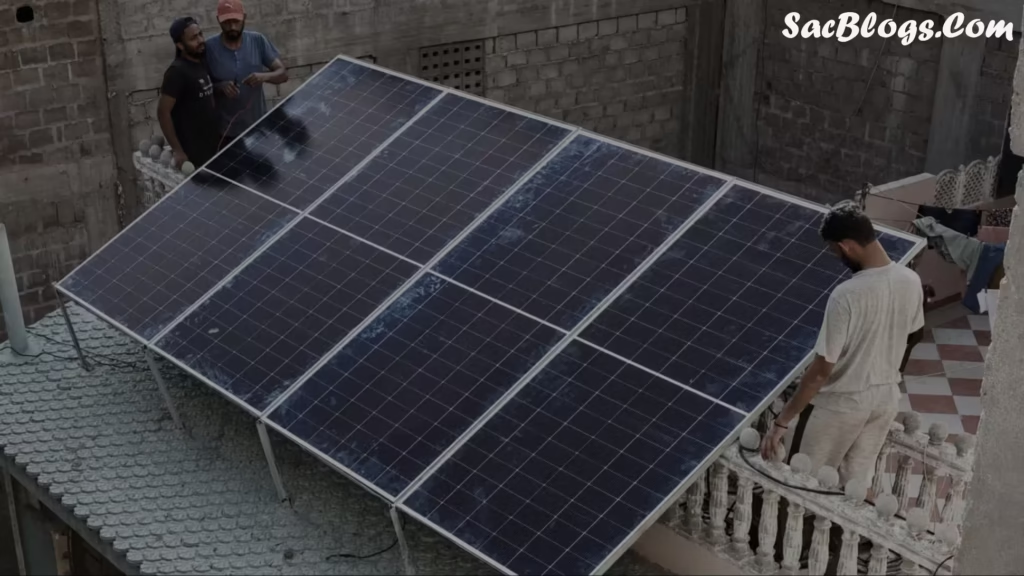
Solar Transformation Across Sectors
The solar revolution in Pakistan is not confined to a single sector but is transforming energy consumption patterns across residential, agricultural, and industrial domains.
Residential Revolution
The residential sector has emerged as a significant adopter of solar energy, particularly among middle and upper-income households. Rooftop solar installations have seen extraordinary growth, with cumulative capacity reaching 5.3 GW by April 2025 – a nearly tenfold increase in just two years . Homeowners are reporting 50-70% reductions in their monthly electricity bills, making solar installations an increasingly attractive investment despite initial setup costs .
The typical payback period for residential systems has shortened to just 3-5 years, after which homeowners benefit from significantly reduced electricity costs for the remainder of the system’s 25+ year lifespan . Beyond financial benefits, residential solar users gain greater energy reliability, reducing their vulnerability to grid outages and power shortages, especially during critical summer months.
Agricultural Transformation
Perhaps one of the most impactful transformations is occurring in agriculture, which contributes roughly 19% to Pakistan’s GDP and employs 38% of its workforce . Of the country’s 1.5-2 million tube wells (water pumps for irrigation), approximately 80% traditionally relied on expensive diesel units . As diesel prices increased with subsidy removals, solar pumps became increasingly cost-effective.
The agricultural sector’s electricity consumption decreased by a remarkable 34.3% in 2024, largely due to this shift to solar-powered irrigation . Experts estimate that half of all tube wells will eventually switch to solar, adding 5.6 GW to 7.5 GW of distributed PV capacity – equivalent to approximately 1 million U.S. residential rooftop solar systems . This transition is restructuring rural energy economics while reducing dependence on imported diesel.
Industrial and Commercial Adoption
Businesses, particularly in manufacturing and export sectors like textiles, have embraced solar power to hedge against tariff hikes and ensure operational continuity during grid outages . Many factories have significantly reduced their diesel consumption – some by as much as 70% – by integrating solar with battery storage systems . This transition has not only lowered operational costs but also enhanced international competitiveness for export-oriented industries facing pressure for cleaner production processes.
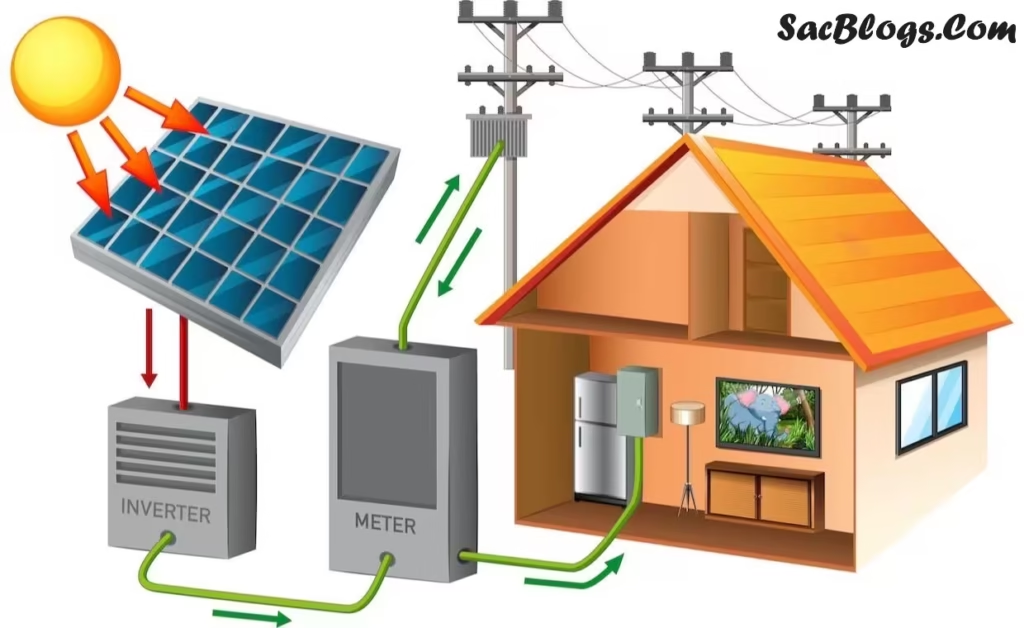
Modernizing Pakistan’s Electrical Grid
The integration of solar energy is driving significant improvements to Pakistan’s electrical grid, essential for managing renewable energy’s intermittent nature and ensuring reliable electricity distribution.
Grid Modernization Efforts
Key grid enhancement initiatives include:
- Infrastructure upgrades to handle bidirectional power flows from distributed solar systems
- Smart grid technologies for better monitoring and management of renewable resources
- Energy storage systems to address solar power’s intermittency
- Grid stability measures to maintain reliability with increasing renewable penetration
These improvements represent both technical advancements and policy reforms, with the government developing regulatory frameworks specifically designed to facilitate renewable energy integration .
The Net Metering Revolution
Net metering has been particularly instrumental in driving solar adoption, allowing consumers to offset their electricity costs by exporting surplus solar power to the grid. However, this success has also created challenges. The government estimates that net-metered consumers shifted a burden of USD 563 million (PKR 159 billion) to other consumers by December 2024 . If unaddressed, this regressive cost-shifting could grow to USD 48.34 billion (PKR 4.24 trillion) by 2034 .
In response, policymakers are considering reducing the buyback tariff for surplus solar energy from USD 9 cents/kWh to USD 3.5 cents/kWh . While this would extend payback periods for new systems, solar adoption continues due to the still-significant gap between grid electricity costs and solar generation costs.
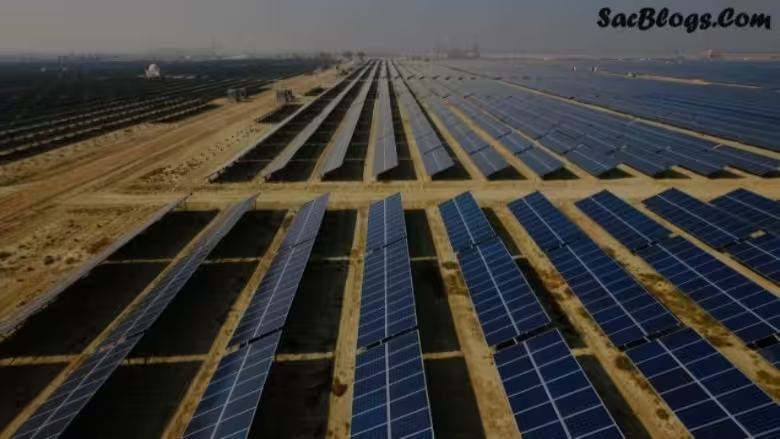
Challenges on the Horizon
Despite impressive progress, Pakistan’s solar revolution faces several significant challenges that require thoughtful policy responses.
Equity and Access Concerns
Solar adoption has been concentrated among affluent households with the capital to invest in PV systems, typically ranging from $1,500 to $4,000 for residential installations . As these consumers reduce their grid electricity purchases, a larger share of fixed grid costs is shifted to lower-income households who cannot afford the upfront investment in solar . This dynamic risks creating a two-tiered energy system where clean energy becomes a privilege for the wealthy while poorer consumers bear an increasing burden of grid maintenance costs .
Microfinance loans for solar installations remain difficult to access, especially in rural areas and informal urban settlements where residents often lack formal land titles or collateral . Addressing this energy equity challenge will require targeted policies to ensure solar benefits reach all segments of Pakistani society.
Infrastructure and Integration Hurdles
Pakistan’s grid infrastructure, historically plagued by significant transmission and distribution losses, requires substantial modernization to effectively manage distributed solar resources . The intermittent nature of solar power presents technical challenges for grid operators accustomed to more predictable power sources.
Additionally, the country faces a surplus of fossil-fuel plants developed under the China-Pakistan Economic Corridor (CPEC) that are now underutilized but still require capacity payments, creating a financial strain on the power sector . As more consumers adopt solar, utility revenues decline, potentially creating a “utility death spiral” where rising tariffs to cover fixed costs drive even more consumers to defect from the grid .
Technical and Regulatory Challenges
Other significant challenges include:
- Lack of skilled labor for proper installation and maintenance
- Limited access to financing for large-scale solar projects
- Insufficient recycling infrastructure for solar panels and batteries
- Need for stable, long-term policies to provide investor certainty

The Road Ahead: Future Prospects and Opportunities
Despite these challenges, Pakistan’s solar future appears bright, with several emerging trends and opportunities poised to shape the next phase of its energy transition.
Storage Revolution and Hybrid Systems
The next frontier in Pakistan’s solar journey is energy storage, with lithium-ion battery imports growing alongside solar PV installations . In 2024, Pakistan imported an estimated 1.25 GWh of lithium-ion batteries, despite facing high taxes and import duties on these systems . Falling battery prices, driven partly by Chinese overproduction, are making solar-plus-storage systems increasingly viable .
Storage allows households and businesses to use solar energy during evening hours, maximizing self-consumption and reducing grid dependence. For industrial users, storage provides backup power during outages, replacing diesel generators. As storage costs continue to decline, solar-plus-storage systems are expected to become standard for new installations.
Domestic Manufacturing and Job Creation
To reduce reliance on imports and capture more economic value, Pakistan approved the Solar Panel and Allied Equipment Manufacturing Policy 2023, providing critical tax and duty exemptions for domestic solar panel manufacturers . Developing a local solar manufacturing ecosystem would create jobs, reduce import dependence, and potentially position Pakistan as a regional solar technology hub.
The solar boom has already fostered a new wave of solar entrepreneurship, with technicians learning installation skills through hands-on experience and knowledge sharing via digital platforms like YouTube and WhatsApp . This growing expertise represents valuable human capital that could support both domestic solar expansion and international employment opportunities for Pakistani solar technicians.
Strategic Policy Recommendations
To maintain solar momentum while addressing emerging challenges, policymakers should consider:
- Targeted financial incentives for low-income households to ensure equitable access
- Investment in grid modernization to support higher renewable penetration
- Development of recycling regulations for solar panels and batteries
- Vocational training programs to build skilled solar workforce
- Stable, long-term policy frameworks to encourage investment

Conclusion: Powering a Sustainable Future
Pakistan’s solar revolution represents one of the most striking people-led energy transitions in recent history. What began as a pragmatic response to high tariffs and unreliable supply has evolved into a transformative movement with far-reaching implications for the nation’s economy, environment, and energy security.
Solar power is not merely an alternative energy source for Pakistan; it is rapidly becoming an infrastructure of necessity that displaces expensive imported fossil fuels, powers economic activity, and expands energy access to previously underserved communities . While significant challenges remain – particularly regarding equity, grid integration, and policy stability – the broader trajectory is undeniably transformative.
As Pakistan continues to harness its abundant sunshine, it writes a playbook for renewable energy adoption that other developing nations might follow – one driven not by international climate mandates but by economic necessity and entrepreneurial spirit. With continued strategic investments, inclusive policies, and technological innovation, solar energy will undoubtedly remain at the core of Pakistan’s sustainable development for decades to come, truly changing the nation’s future one rooftop at a time.
Read Also: Automation vs Employment in Pakistan – Navigating the Future of Work and Growth
Frequently Asked Questions (FAQs)
1. Why is solar energy particularly important for Pakistan?
Solar energy is crucial for Pakistan due to its abundant sunlight with over 300 sunny days annually, helping address chronic energy shortages, reducing reliance on expensive fossil fuel imports, and offering a cost-effective alternative to grid electricity that has seen prices soar by 155% in three years .
2. What is the future of solar energy in Pakistan?
The future appears promising, with solar capacity projected to grow from 1.41 GW in 2024 to 9.53 GW by 2029 . The government aims to generate 30% of energy from renewables by 2030, with solar expected to contribute significantly to this target .
3. How does net metering work for solar systems in Pakistan?
Net metering allows solar system owners to export excess electricity to the national grid, receiving credits that offset their consumption during periods without sunlight . However, policies are evolving, with potential changes to buyback rates under discussion to address grid economics .
4. What are the main challenges facing solar energy adoption in Pakistan?
Key challenges include high upfront costs, need for grid modernization, inequitable access across income groups, skilled labor shortages, and policy uncertainty regarding incentives and tariffs .
5. How is battery storage changing Pakistan’s solar landscape?
Battery storage allows solar users to store excess energy for use at night or during outages, reducing dependence on both the grid and diesel generators. Lithium-ion battery imports are growing rapidly, enabling more consumers to achieve greater energy independence .
6. Can solar energy help Pakistan’s agricultural sector?
Absolutely. Solar-powered tube wells are transforming agriculture, reducing dependence on expensive diesel pumps and unreliable grid power. With 1.5-2 million tube wells nationwide, half could potentially switch to solar, adding 5.6-7.5 GW of capacity .
7. What government initiatives support solar energy in Pakistan?
Government initiatives include net metering policies, duty exemptions on solar equipment, the Solar Panel Manufacturing Policy 2023 to promote local production, and ambitious renewable energy targets aiming for 30% renewables by 2030 .
8. How does solar energy benefit the environment in Pakistan?
Solar power significantly reduces greenhouse gas emissions by displacing fossil fuel-based electricity generation. As a clean, renewable source, it helps improve air quality and contributes to global climate mitigation efforts while conserving water used in thermal power generation .
9. What is the typical payback period for a residential solar system?
Most residential solar systems in Pakistan achieve cost recovery within 3-5 years through savings on electricity bills, after which homeowners benefit from significantly reduced energy costs for the system’s 25+ year lifespan .
10. How is Pakistan addressing recycling of solar panels and batteries?
Currently, Pakistan has a 0% e-waste collection rate, and most lithium-ion batteries end up in landfills or are dismantled informally . Developing proper recycling regulations and infrastructure is an emerging priority to manage solar equipment lifecycles sustainably .



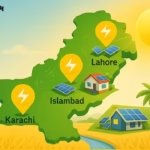
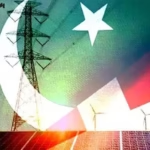
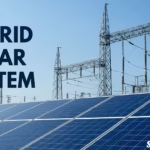

1 thought on “Solar Power in Pakistan – How Sunshine is Revolutionizing the Nation’s Energy Future”